Why Keyword Intent Is Important for Conversion Rates?
Posted on: June 17, 2022 2:19 PM
In SEO terminology, keyword intent refers to the user’s purpose for the search. Instead of focusing solely on keyword density, search engines focus on the content of keywords too. Therefore, it is crucial to know what users are searching for as it helps to create relevant content for the target audience, yielding higher conversion rates.
Keyword intent is essential for practical keyword research. It helps to comprehend users’ intent when they search for a specific query in search engines like Google. Nowadays, search engines are more spontaneous when understanding and ranking content on the web. Previously authority of a topic was determined by the number of times a keyword appeared on a webpage. But now search engines consider the context of keywords.
You can consider the search intent and user intent in the context of a keyword. Knowing the intent of your keywords can be quite helpful when creating content for a website; this way, you can ensure you create content that is useful and relevant to the needs of your target audience.
For a more detailed understanding of Keyword intent let’s dig deeper;
As we know keywords can carry different meanings for instance “Bank” as in “sloping down to a river or lake” vs. “an institution offering certain financial services”, in that case, search engines employ search intent to understand and deliver the results they think the audience wants.
Furthermore, search engines understand search intent because they address the context of a keyword, not just the description itself.
Contextual factors include:
These factors notify search engines of how a keyword is used and represented.
Having chosen the topic to target, you may have also picked out the primary keyword to tailor your content around. For instance, “Food Supplements” or “Fit”.
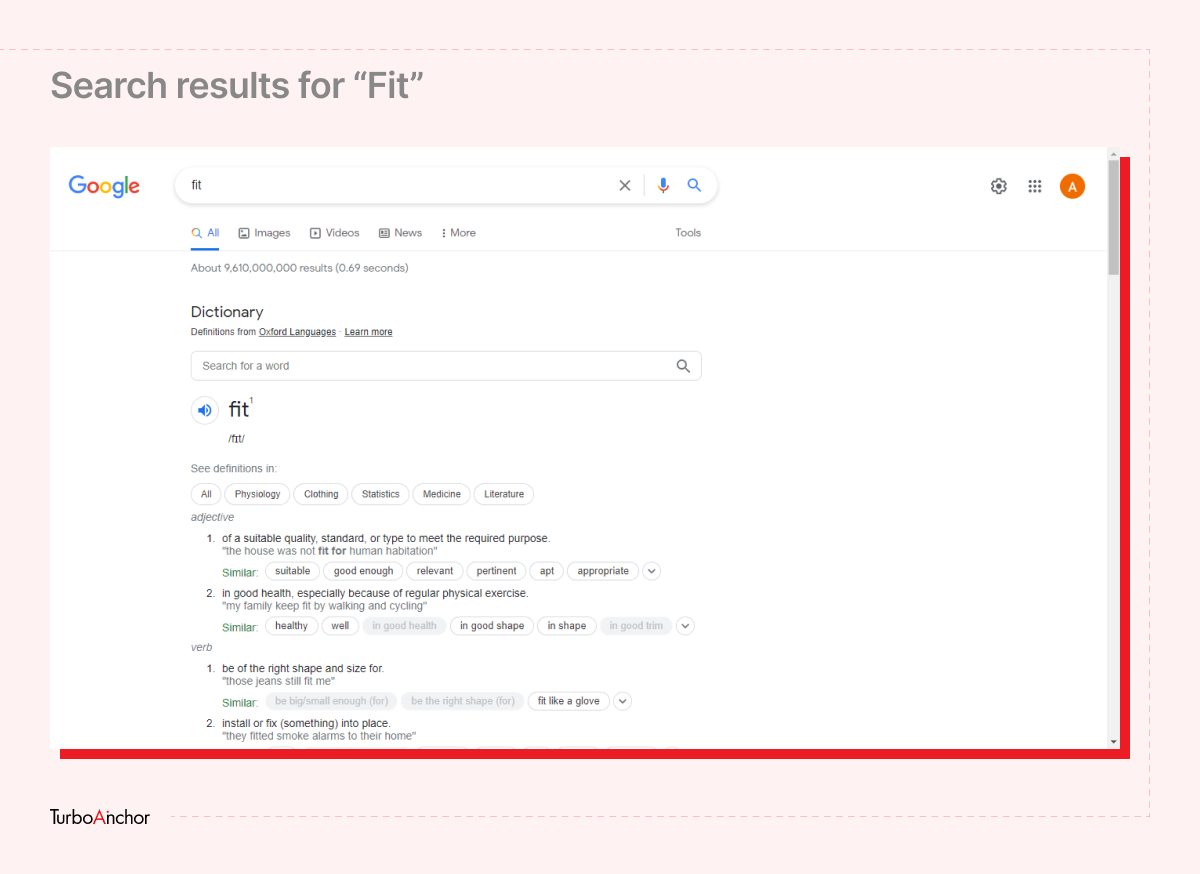
Start by searching for the primary keyword in a search engine to see the top SERP results to understand the search intent. Knowing how search engines interpret the context of your content will help you optimize it effectively.
Let’s suppose you are interested in creating content for the primary keyword is “Fit” in the context of How to get “Fit” with a good diet plan. First, search for “Fit” to see the top organic search results for “Fit.”
Analyze the meta titles for how the topic “Fit” is displayed. Like search results with “what is,” “why,” or informational content. Doing this will let you know the sites and companies themselves to understand your top competitors for this topic.
Secondly, comes the next step when you’re done checking your primary keyword in the SERP. Now you can come up with keywords to build out your keyword cloud or cluster.
The long-tail keywords will be related to your main keyword, but with more precise qualifiers to further describe the content’s intent.
Each long-tail keyword has a slightly different search intent, so deciding which search qualifier matches your content’s search intent is essential. During your research process, you will be replacing your initial, general primary keyword with a more long-tail, niche keyword.
Suggested Read: How are Web Pages Ranked: Important Ranking Factors
Lastly, when you are well aware of both steps mentioned above, then comes the final step. You will discover your keyword cloud changing to re-prioritize keywords with search intents that are not aligned to your content intent. In other words, help stimulate ideas for more long-tailed keywords that align with your content’s requirements.
You can directly start outlining the scope of search intent to track which keywords and search intents are most helpful. For instance, which are most related to your content objectives, and which are irrelevant.
There are four types of keyword intent with their particular purpose. You should apply them depending on their suitability to your business goals.
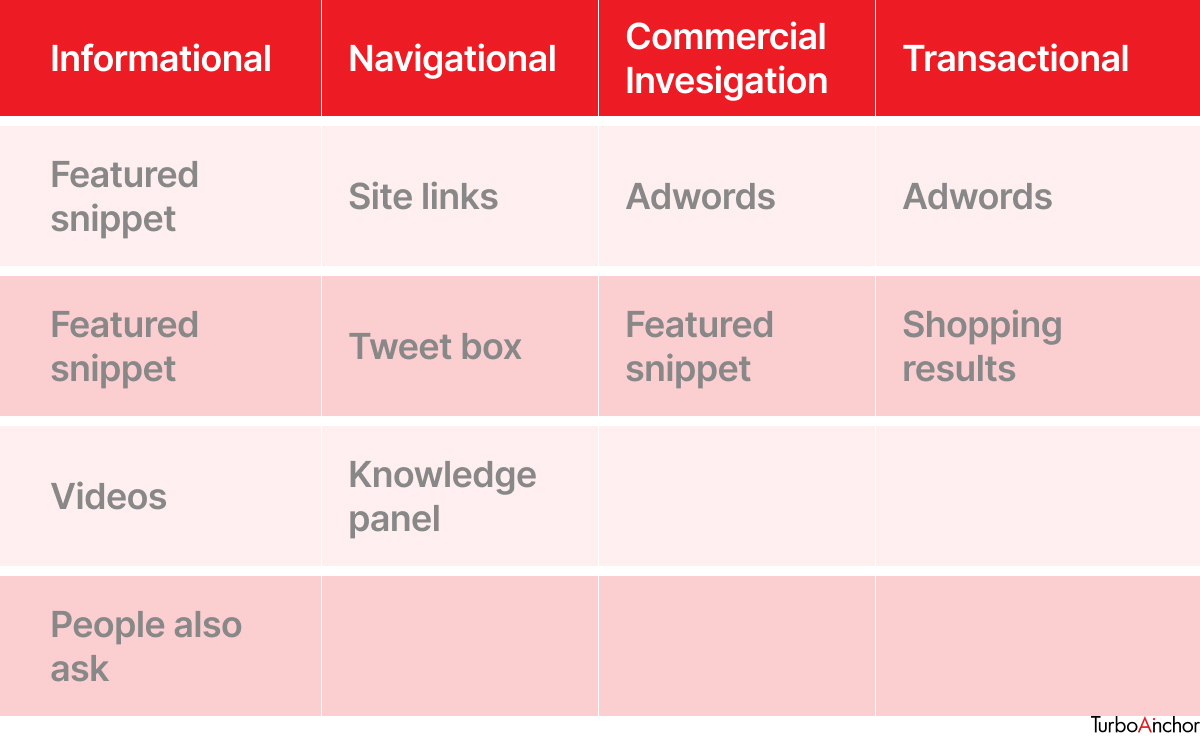
There is a substantive number of users searching for information about a specific item or subject. Similarly, it would make sense if you could employ keywords with information intended to attract potential buyers.
Example: Which is the best airline?
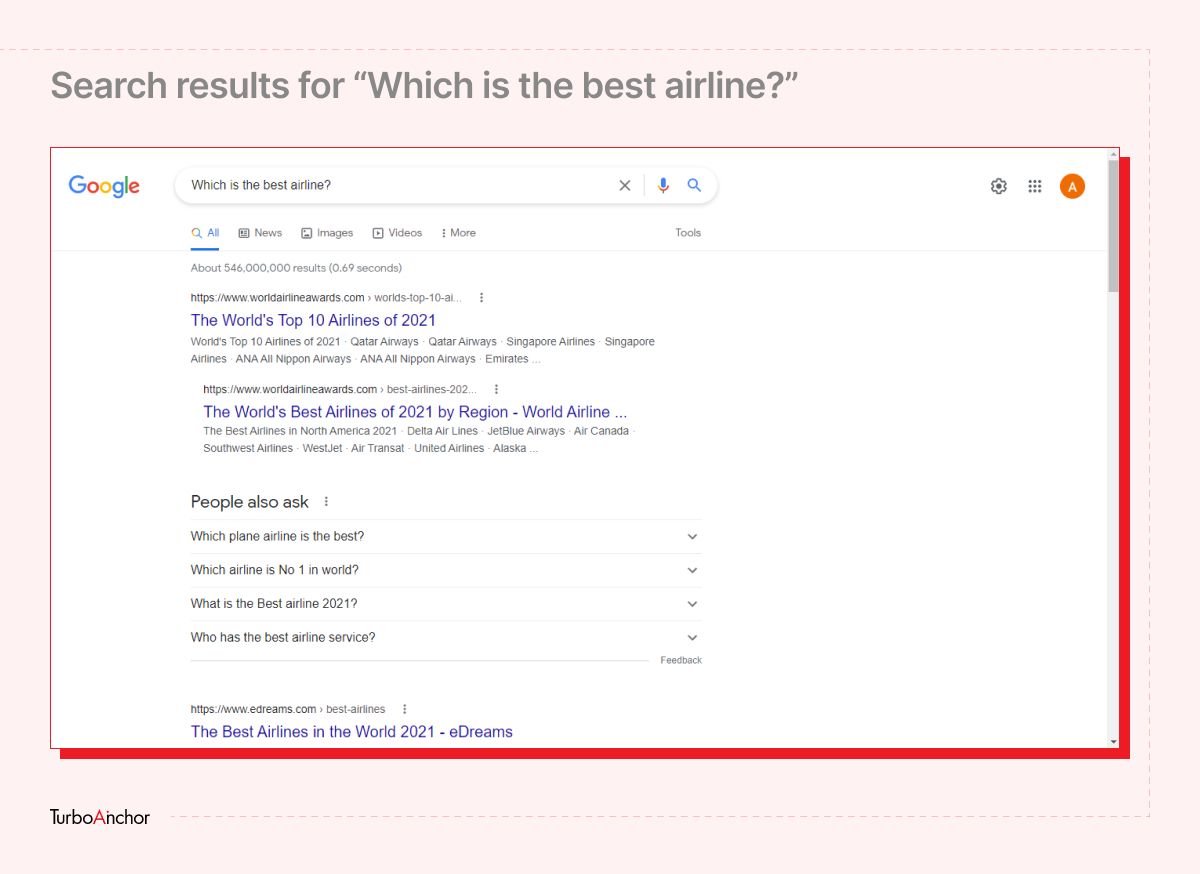
Navigational intent typically includes assistance in navigating them to their website. Users normally type keyword phrases related to a company’s brand name or other specific details. It would be best to use navigational keywords to help users get to their desired website.
Example: Lufthansa website
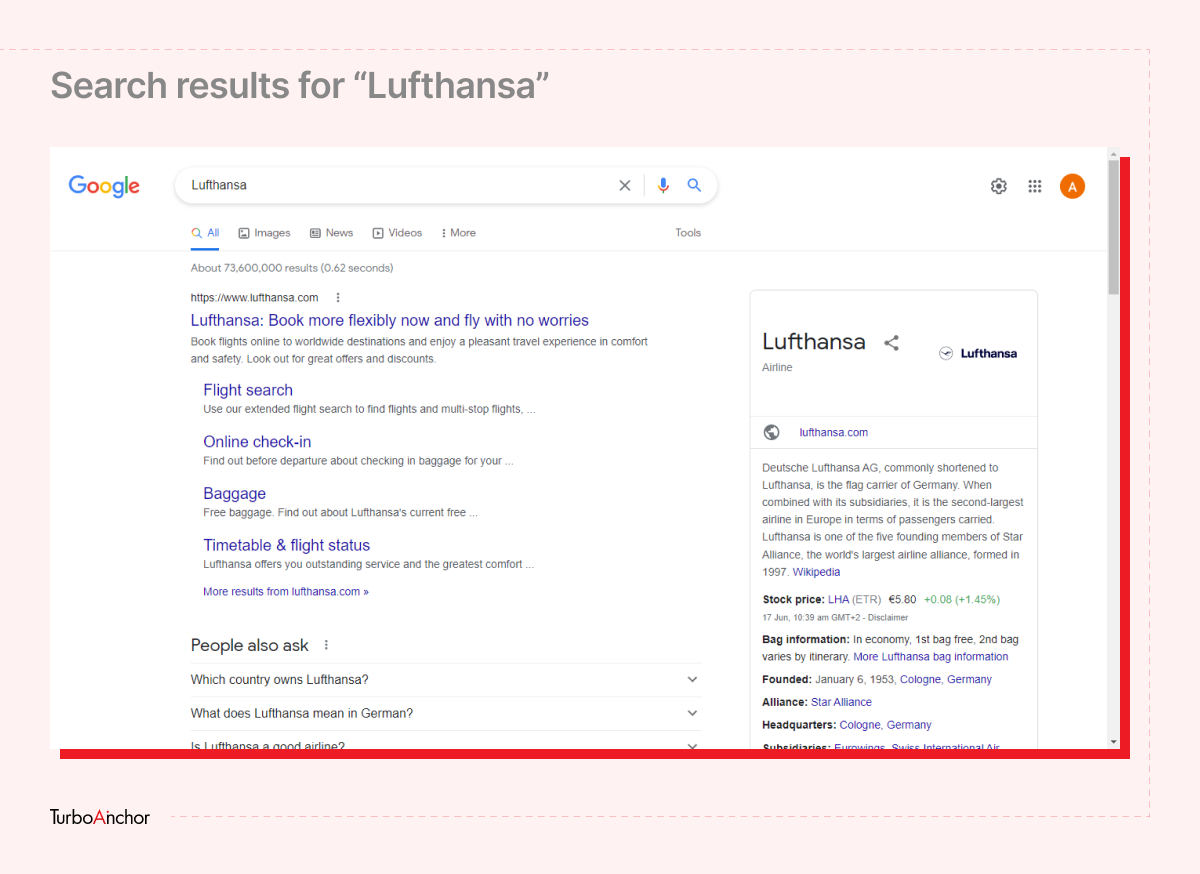
Commercial intent refers to when users intend to compare products or sellers. They could be interested in knowing the quality or price differences of various items. For example, product or service comparison.
Example: Lufthansa vs. Emirates
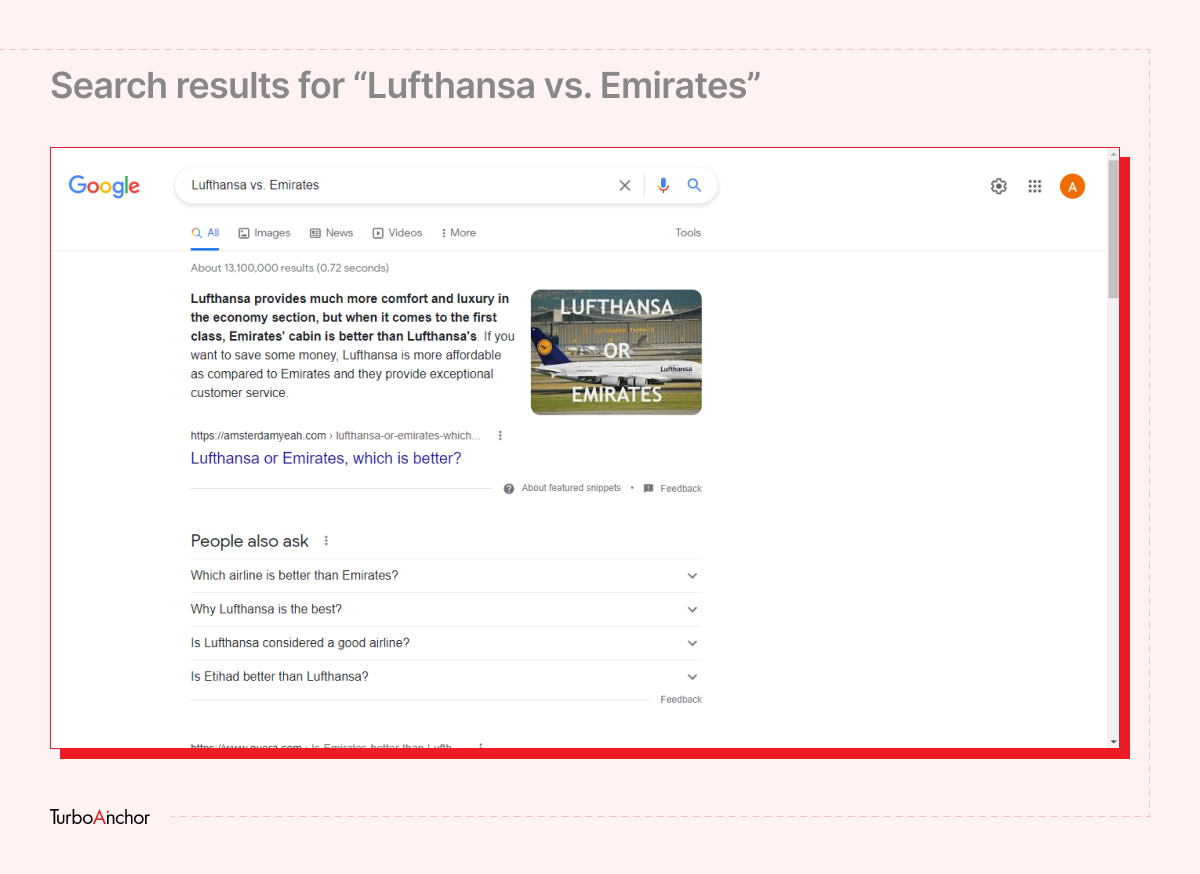
Transactional intent keywords are highly optimized for marketing strategies. They carry words such as ‘buy,’ ‘deal,’ ‘discount,’ and similar terms, demonstrating that users are willing to buy a product or service.
Example: Buy an economy ticket
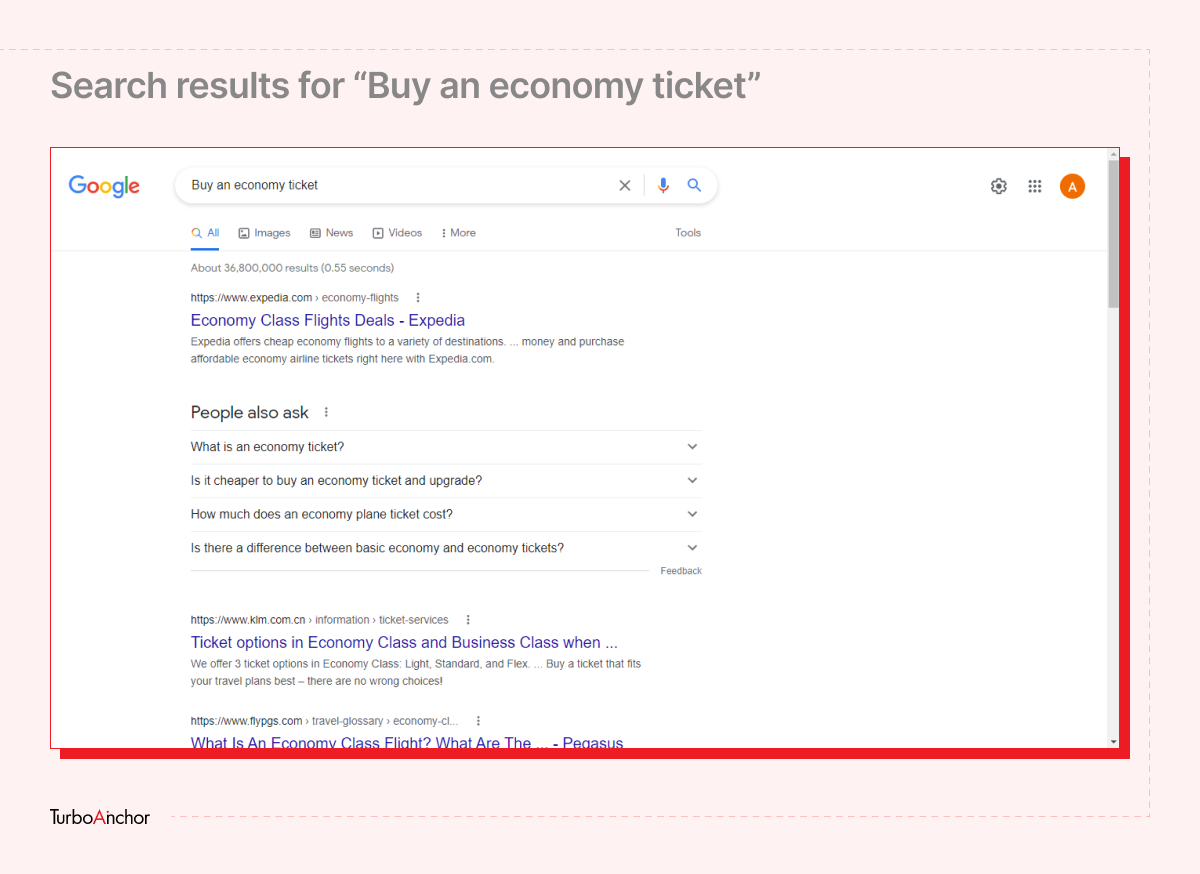
High intent keywords are generally known as transactional keywords. Businesses, therefore, must target transactional keywords. Users have information about their search in advance, looking to purchase a product or service.
So there are more chances of conversion with high intent keywords. You can think of these terms as “buy,” “visit,” “get,” and “purchase.”
For Example, “buy cell phone camera under $500” is a transactional keyword, but it doesn’t have as much intent behind it as “buy Samsung S20 Ultra”. With the first keyword, the searcher wants to buy a cellphone but hasn’t decided which one. With the second keyword, the searcher knows which cell phone they want to buy; the intent is much higher.
In contrast, low intent keywords manifest a navigational and informational intent. The users are mainly looking for information on a specific topic, which shows more minor prospects for conversion.
The term “Free” is an example of a low intent keyword. People who search for that are unlikely to purchase it if they include that in their search query. You cannot use these if you sell a direct-to-customer product or have an eCommerce store since you will not offer free shipping.
Search engines strive to show the best possible relevance to queries searched by users. According to statistics, Google processes over 8.5 billion searches per day. [1] Given these facts, it is necessary for businesses to comprehend user search intent and adopt strategies that will appeal to their target audience to convert into buyers.
Their websites should offer accurate information and easy navigation for their audience. They must ensure the proper optimization of their product pages with commercial intent keywords.
There are 3 C’s of search intent: content type, content format, and content angle – that are crucial for search intent optimization.
It refers to a broad spectrum of content in SERPs. Its results typically include the following: landing page, blog page, product page, and category page.
It includes the format of the top-ranking pages. Some common examples include reviews, how-to guides, opinion pieces, tutorials, etc.
It entails a distinct selling aspect of top-ranking posts and pages. It allows businesses to observe what sets apart a user’s query from other users doing the exact search.
There are some critical steps to optimize your content with keyword intent for better conversions.
You can organize your keyword phrases by intent. Informational intent keywords are simpler content ideas for your content marketing team to incorporate into the content.
The transactional intent keywords enable users to pass conveniently through the conversion channel. For instance, product FAQs, product lists, product manuals, etc.
Commercial intent keywords include match product pages that have to be optimized to rank them exactly for such queries. E.g., these can be product landing pages with a ‘buy now’ feature or product lists.
Navigational intent keywords, mainly these will include potential customers searching for product reviews, while others may include the ‘buy now’ feature. Most of the time, you should share this information with your sales and customer representative teams to assess customers’ requirements.
Your next step will be to use some keywords for creative ideas about new content or landing pages. Likewise, you can use some keywords to optimize or update outdated content pages.
Your final step will be to organize keywords according to the landing page type. Businesses will be required to create various content and landing pages for informational and transactional queries. It can include blog posts with lists of products for the holiday seasons or FAQs primarily related to navigational queries.
Businesses must acknowledge that keyword intent is essential for boosting higher conversion rates. Likewise, the produced content must also be congruent with the audience’s search intent. You must make sure that your page offers relevant information when your audience seeks information regarding your product. While guiding people to ‘product purchase’ pages if they are actively looking to buy your product.
Reference:
[1] 10 Google Search Statistics You Need to Know in 2022 – Oberlo
Also Read: